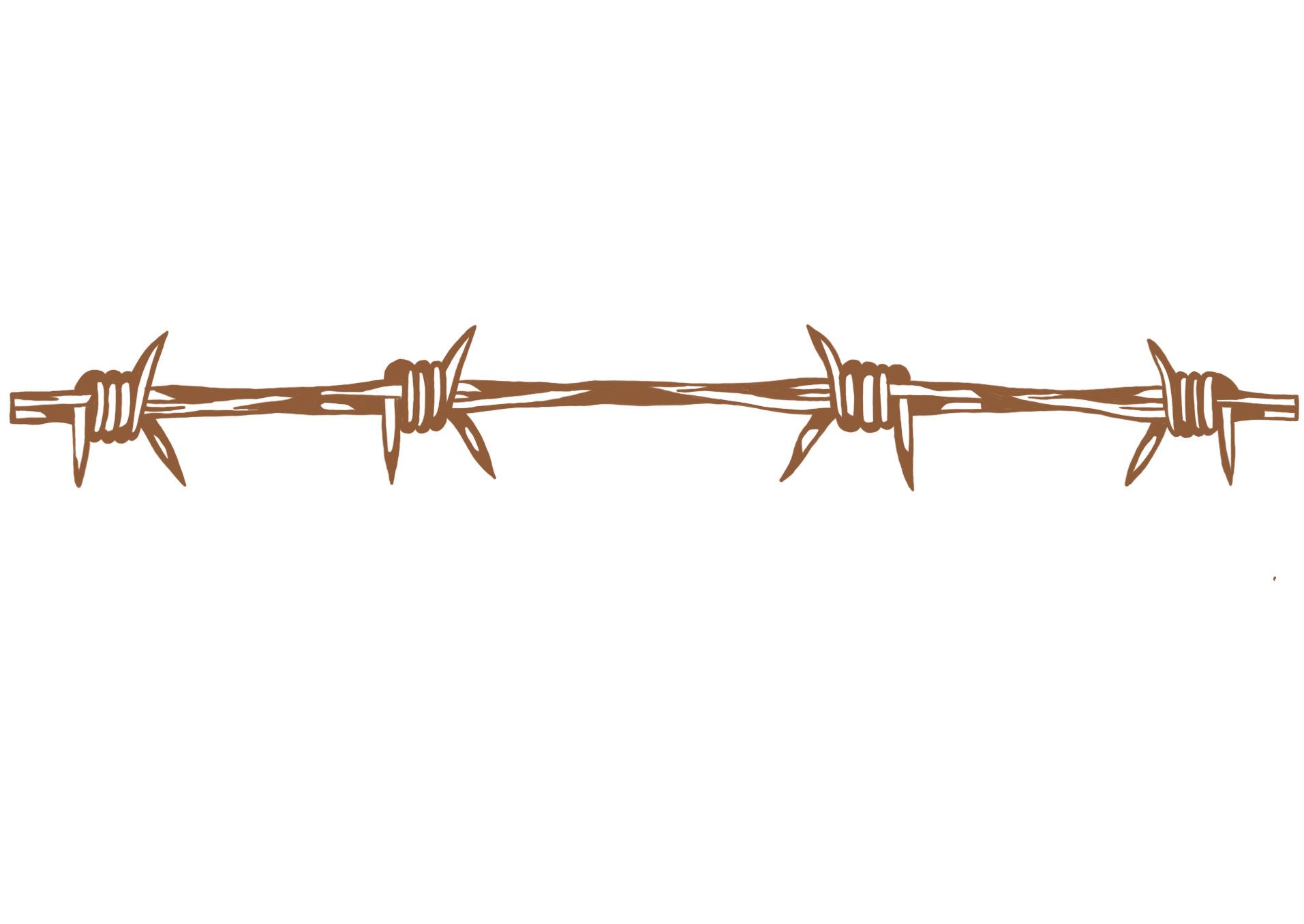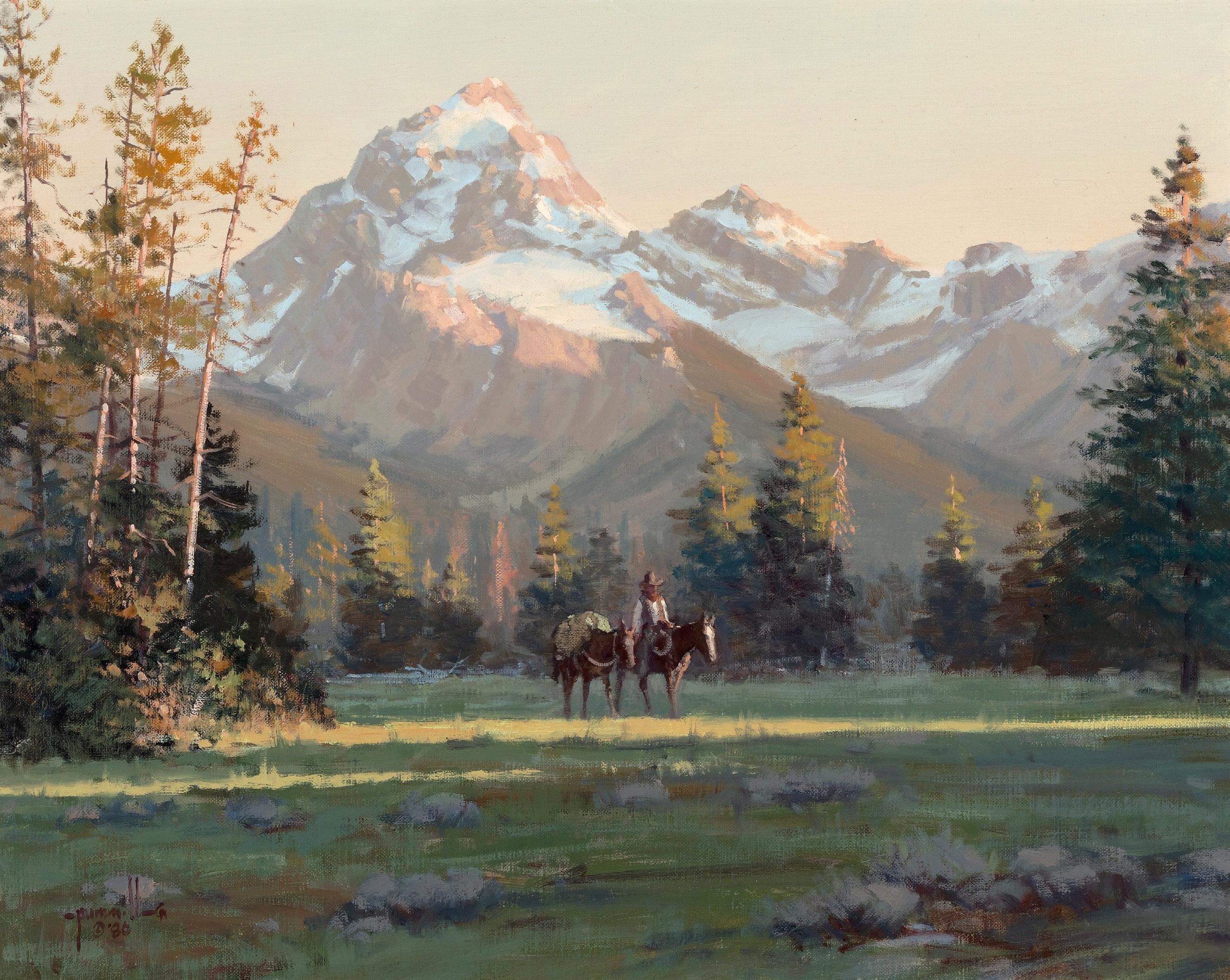
3 minute read
Robert Pummill
1936 -0000
Raised in rural Ohio, Robert Pummill helped out in his father’s restaurant and picked up jobs on nearby farms. Though he loved to draw, Pummill notes that, “Where I grew up, there was little direct art instruction available; correspondence courses were a good alternative.” So, he says, “I took my first art course at eleven and have been serious about it ever since.” Pummill believes that, “The work of one of the founders of the Famous Artist Course, Harold Von Schmidt, and the text he wrote for the course, had a great impact on my art.” And that, “Through the years I’ve realized that the fundamentals taught through the Famous Artists were as good as any art school.” His eventual fascination with Western subjects may have been due in part to the fact that his uncle was a horse trader, though according to him it didn’t happen immediately, “It was all an evolution. I don’t know that there were any lightning strikes.”
When Pummill graduated from high school he joined the Air Force working in avionics. For two of those years he stationed at Great Falls, Montana where the vistas and wideopen spaces would later become the settings for many of his western scenes. Following a nine-year stent in the Air Force he enrolled in evening courses at the Art Center School of Design in Los Angeles, working by day as a commercial illustrator for the aerospace firm TRW. Later he moved to Dallas for a job as an industrial illustrator with Vought Aeronautics and it was while working there that he learned to tell a story through his illustrations. “I was working with concepts of aircraft that hadn’t even been built yet. I was taught to take the blueprints and create a storyline around them—a plane in combat, for instance. To create a visual storyline, you have to have a fairly vivid imagination and be able to put yourself in the scene.” In 1977 Pummill turned his attention to working as a full-time fine artist in the Western genre, eventually moving to Kerrville in the Texas Hill Country, where he lives today. “My choice of Western subject matter is the result of a lifelong fascination with the life of the cowboy and the drama of opening and development of the American West,” he recalled. And that, “At the time there were very few painters doing stagecoaches and cattle drives with multiple figures and animals. But I enjoyed doing them, and through the years I became known for those kinds of things.” However, he recently commented, “As I’ve grown older, I’ve been doing more landscape painting. I’d been neglecting it for a long time and decided to get back into it. It’s food for the soul.”
While he occasionally works in watercolor or bronze sculpture, Pummill’s primary medium is oil painting. “The artists I admire,” says Pummill, “are Sargent, Remington, N.C. Wyeth, many of the Flemish masters, and some of the French Impressionists. I feel many of the world’s greatest artists are alive today, however, and many are painting Western subject matter.”
Pummill tends to work at his easel seven days a week, taking a break for lunch and then back in the studio until dark. He sometimes works on several paintings at a time. “I’ll be working on one and get an idea for another one,” he says. “That’s why I have three or four easels set up.” Pummill says, “I’m always looking for new stories and new ways to tell them. You know, you’ve got all the different landscapes in the West, from deserts to snowy mountain ranges. There must be a million ways to tell these stories.” And, “It never gets boring or dull.”
PACKING IN THE TETONS Oil on Linen 1980 16 x 20 inches
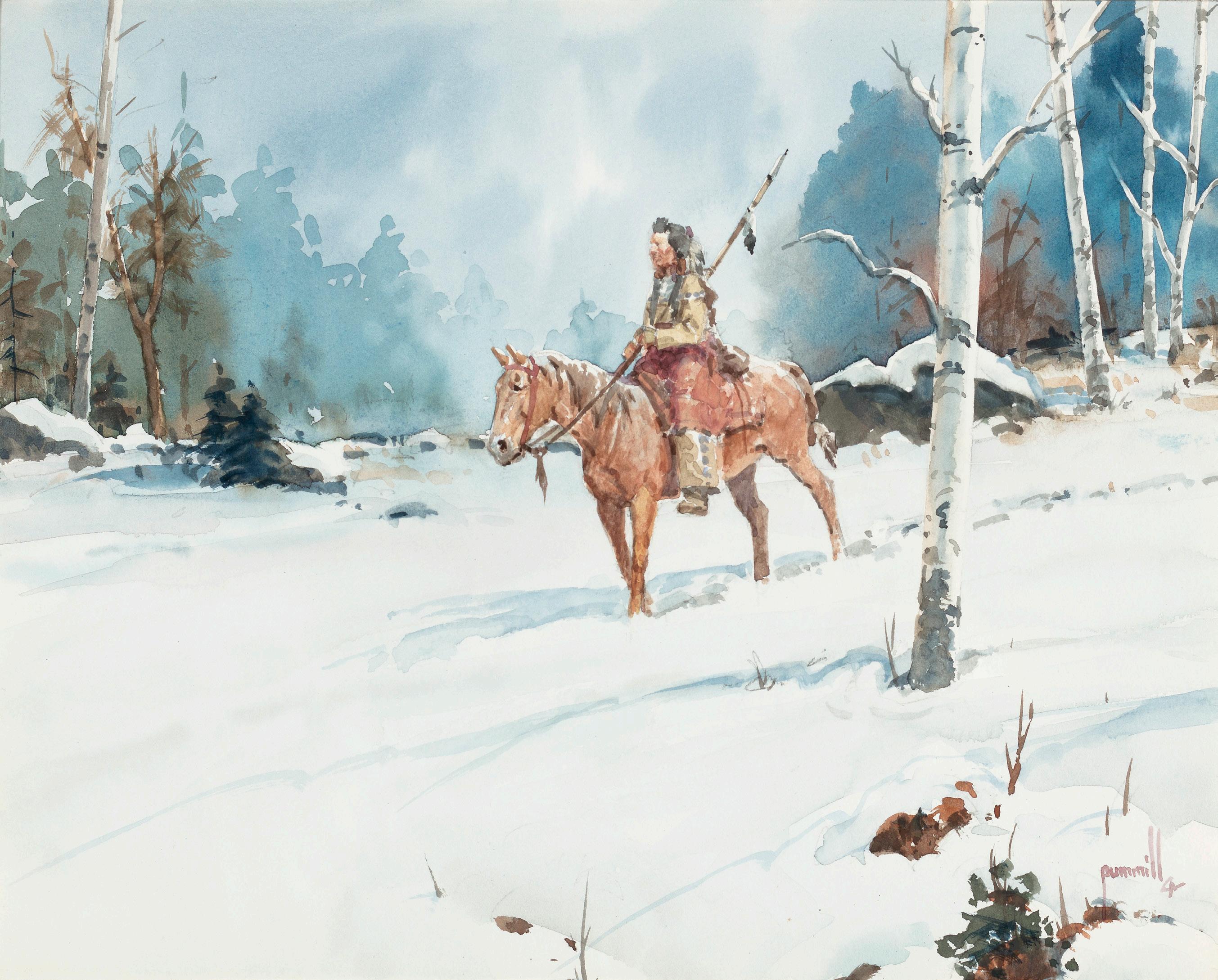
SEASON OF SILENCE Watercolor on Paper 11 x 13 ½ inches
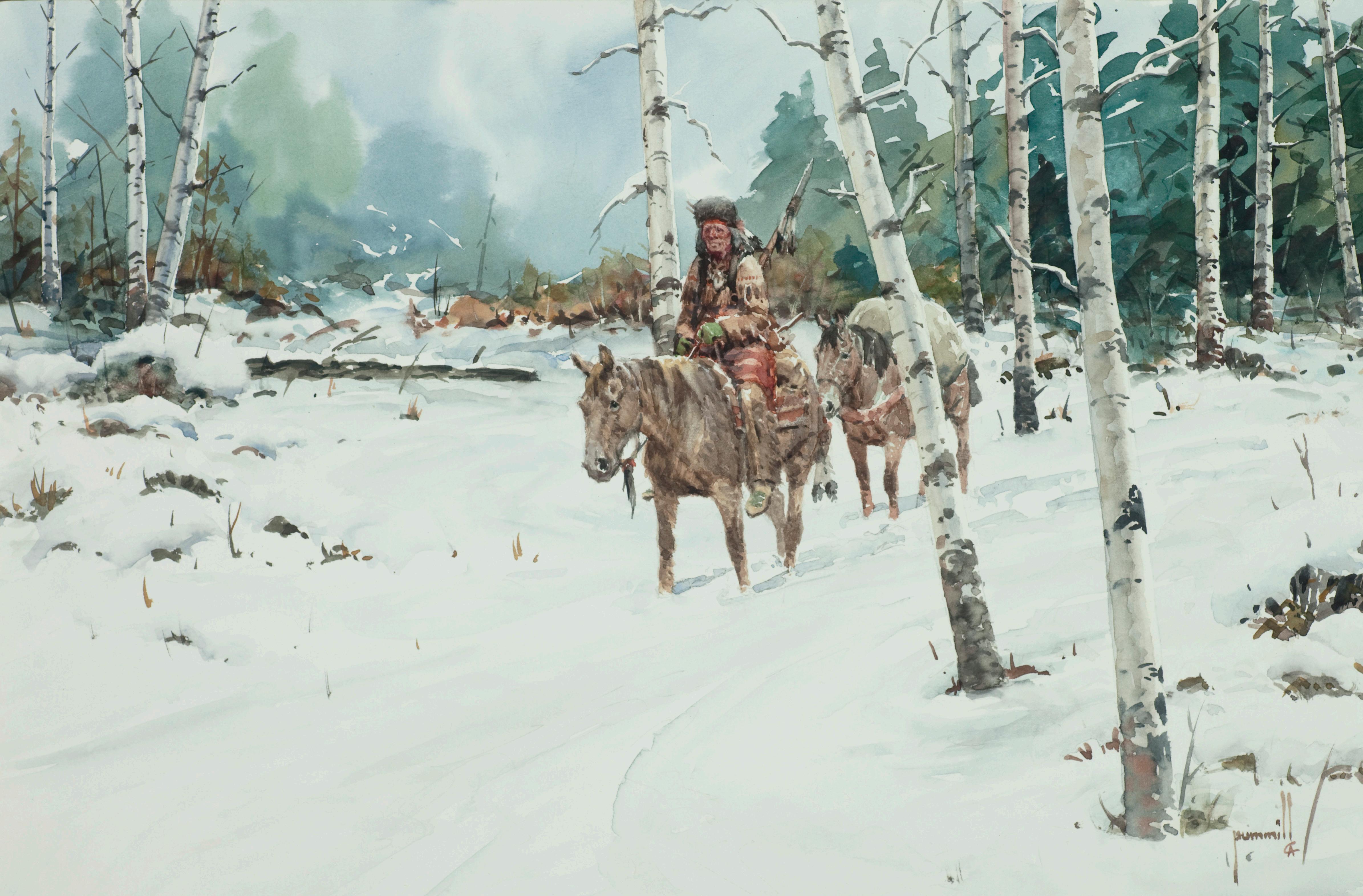
THROUGH THE ASPEN Watercolor on Paper 14 5⁄8 x 19 ½ inches
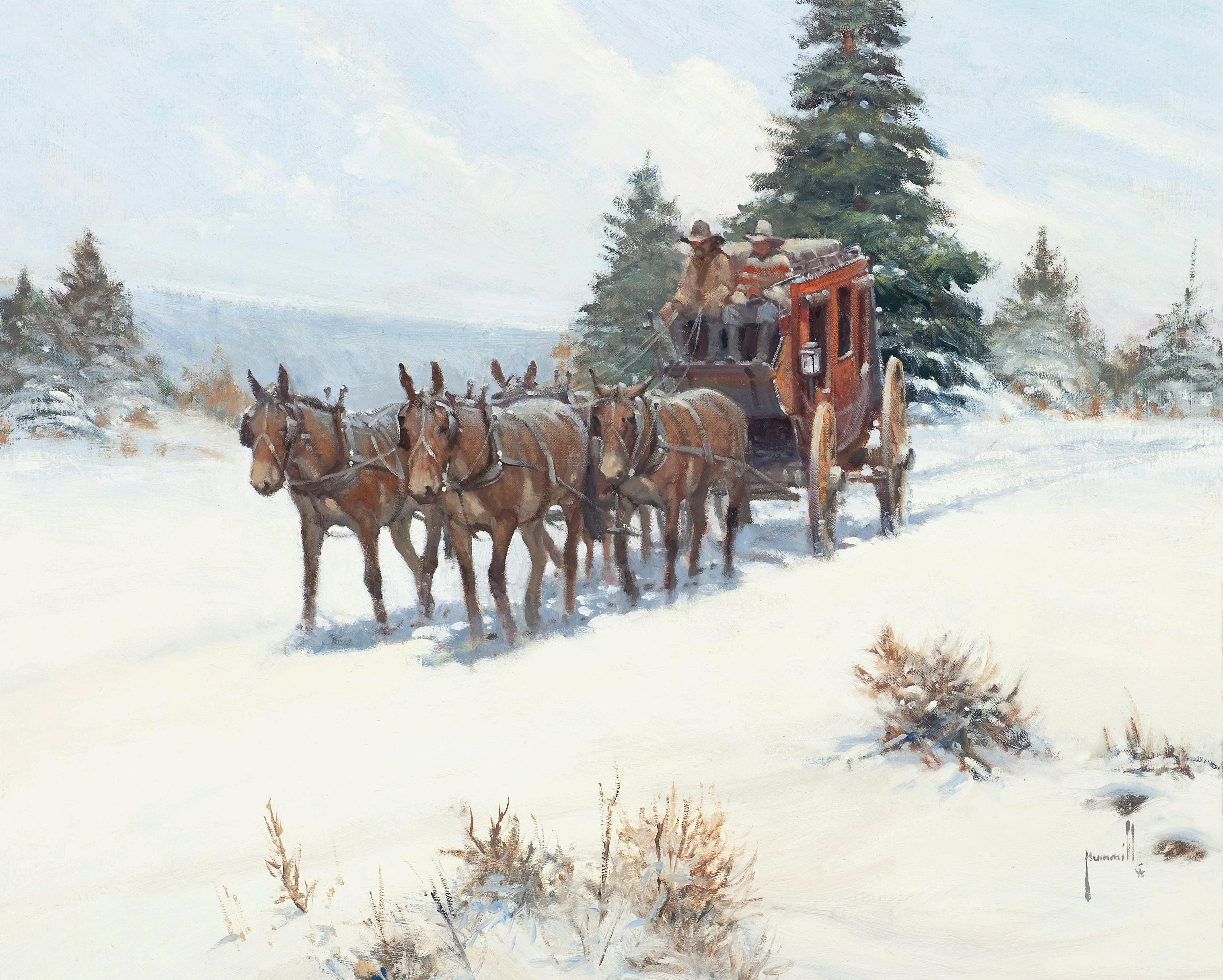
WINTER PASSAGE Oil on Canvas 15 7⁄8 x 20 inches
